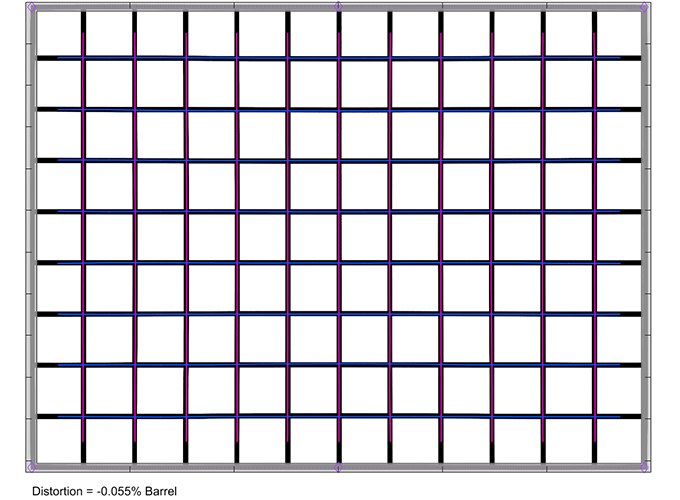|
Laowa 50mm f/2.8 2x Ultra Macro APO MFT - Review / Test Report - Analysis |
|
Lens Reviews -
(Micro-)Four-Thirds
|
|
Page 2 of 3

Distortion
Typical for most macro lenses, image distortions are basically absent.

Vignetting
Micro-Four-Thirds cameras are auto-correcting vignetting unless deactivated. Laowa has taken a very aggressive approach here by not only reducing the vignetting but eliminating it which is a little unusual. Other than a somewhat increased corner noise at large aperture there's nothing wrong with this though.

MTF (resolution)
Laowa's macro lenses have been very sharp so far and the 50mm f/2.8 2x Ultra Macro APO is no exception in this respect. The center is already excellent at f/2.8 and the outer image region is easily on a very good level. Stopping down doesn't increase the center sharpness anymore but the border and corner quality receives a slight boost, and a tiny bit more so at f/5.6. Typical for micro-four-thirds diffraction is having a higher impact from f/8 onward. The sharpness is still very good here and it's also more than usable at f/11. However, f/16 should be avoided and at f/22 there isn't much more left but a pixel soup.
The centering quality of the tested sample was good. The field curvature is minimal.
Please note that the MTF results are not directly comparable across the different systems!
Below is a simplified summary of the formal findings. The chart shows line widths per picture height (LW/PH) which can be taken as a measure for sharpness.
If you want to know more about the MTF50 figures you may check out the corresponding Imatest Explanations

Chromatic Aberrations (CAs)
Lateral CAs (color shadows at the image borders) are absolutely negligible at around 0.1px. Loawa is an APO design so this does also apply to longitudinal CAs (not shown).

Bokeh
The Laowa 50mm f/2.8 2x Ultra Macro APO is a reasonably fast lens so regardless of whether you intend to use it for portraits or macro photography, the quality of the bokeh becomes a major criterion.
As you can observe below, out-of-focus highlights are nicely rendered at f/2.8. The inner zone of the discs is perfectly clean and there's just a minor degree of outlining. Stopping down reveals a bit of an unfortunate effect though - the shape of the edgy aperture becomes very apparent at f/4 already. Obviously, Laowa didn't implement rounded aperture blades on this lens.
 When looking at the highlight rendering across the image frame, you can notice the usual deterioration of the shape towards the corners. This is a mechanical vignetting effect. That being said, it happens fairly "late" and "cat eyes" occur in the corners only. Stopping down pushes the corner highlights back to a sort of circular shape but by doing so the already mentioned edgy aperture shape emerges as well.
As far as the general rendering is concerned, the results are good albeit not perfect. The foreground blur is very silky indeed. The background blur is nicely symmetrical but obviously somewhat harsh at high contrast transitions.
When looking at the highlight rendering across the image frame, you can notice the usual deterioration of the shape towards the corners. This is a mechanical vignetting effect. That being said, it happens fairly "late" and "cat eyes" occur in the corners only. Stopping down pushes the corner highlights back to a sort of circular shape but by doing so the already mentioned edgy aperture shape emerges as well.
As far as the general rendering is concerned, the results are good albeit not perfect. The foreground blur is very silky indeed. The background blur is nicely symmetrical but obviously somewhat harsh at high contrast transitions.

Flare and Sunstars
The Laowa lens has one major weakness - flare. It's not a first - we have seen this in previous Laowa tele lenses before. In extreme situations like the one shown below, you have to expect a reduced contrast as well as some ghostings.
Sunstars at small aperture settings are, obviously, possible but somewhat coarse. That's a fate it shares with most tele lenses though.

|